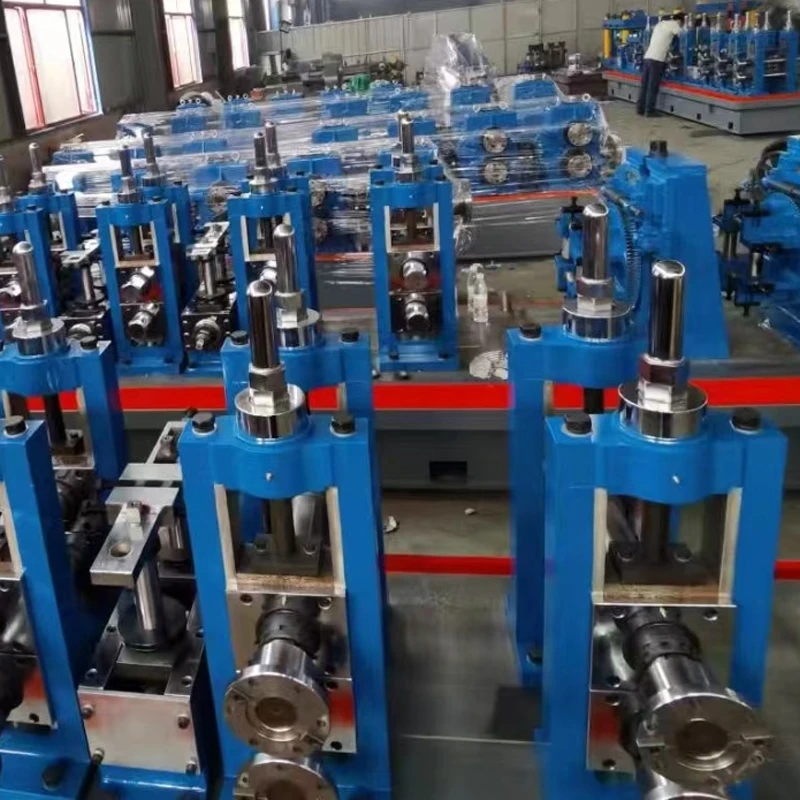capping roll forming machine
Capping Roll Forming Machine An Overview
In the world of manufacturing, efficiency and precision are paramount, especially when dealing with metal components. One of the essential pieces of equipment that has gained prominence in modern factories is the capping roll forming machine. This specialized machinery is designed to produce capping profiles for various applications, ensuring that industries meet their production demands while maintaining high standards of quality.
What is a Capping Roll Forming Machine?
A capping roll forming machine is a type of machinery that shapes metal strips or sheets into specific profiles, known as capping profiles. These profiles are often used in construction, automotive, and other industries where protective or decorative caps are required. The machine operates on the principle of roll forming, where a flat metal sheet is fed into a series of rollers that gradually shape it into the desired form.
The capping roll forming machine typically comprises several key components, including a decoiler, roll forming sections, cutting mechanisms, and a control system. The decoiler is responsible for unwinding the metal coil, which is then fed into the roll forming section. As the metal passes through a series of shaped rollers, it is gradually formed into the final capping profile. Once the desired length is achieved, the cutting mechanism slices the finished product from the continuous sheet.
Applications of Capping Profiles
Capping profiles produced by roll forming machines have a wide range of applications. In the construction industry, they are often used as edge caps for roofing systems, wall panels, and other architectural elements. These caps not only enhance the aesthetic appeal of a building but also provide protection against weather elements.
In the automotive sector, capping profiles play a crucial role in vehicle design and assembly. They can be found in the form of door caps, window trims, and various other components that require a neat finishing touch. The resilience and durability of these profiles are essential for ensuring that vehicles withstand the rigors of daily use.
capping roll forming machine

Additionally, capping profiles are utilized in the manufacturing of appliances and furniture. They help give a finished look to edges and corners, providing both functional benefits and visual appeal. The versatility of capping profiles makes them an integral part of many products we use daily.
Advantages of Using a Capping Roll Forming Machine
One of the primary advantages of using a capping roll forming machine is the efficiency it offers. The continuous production process allows manufacturers to produce large quantities of profiles quickly, reducing lead times significantly. This efficiency translates to cost savings, making it an attractive investment for businesses aiming to scale their production capabilities.
Precision is another major benefit of roll forming. The machine can create consistent dimensions and shapes, ensuring that each capping profile meets strict quality standards. This level of accuracy minimizes waste and rework, contributing to overall operational efficiency.
Moreover, capping roll forming machines are highly customizable. Manufacturers can easily adjust the tooling and settings to produce different profiles according to specific client needs. This flexibility allows businesses to cater to a diverse range of applications without the need for multiple machines, streamlining operations.
Conclusion
The capping roll forming machine represents a significant advancement in manufacturing technology. With its ability to efficiently produce high-quality capping profiles, it has become an essential tool for various industries. Its applications in construction, automotive, and consumer goods highlight its versatility and importance in modern production processes.
As industries continue to evolve and demand for precision-engineered components grows, the role of the capping roll forming machine will undoubtedly expand. Businesses that invest in this technology stand to benefit not only from increased efficiency and reduced costs but also from the ability to meet the ever-changing needs of their customers. Embracing such innovations is key to staying competitive in today's dynamic manufacturing landscape.
-
High Frequency Straight Seam Welded Pipe Production Line|BzZhou Xinghua|Precision Welding&EfficiencyNewsJul.30,2025
-
High Frequency Straight Seam Welded Pipe Production Line - BzZhou Xinghua|Precision Engineering&EfficiencyNewsJul.30,2025
-
High-Frequency Straight Seam Welded Pipe Production Line-BzZhou Xinghua Machinery Equipment Manufacturing Co., LTD.NewsJul.30,2025
-
High-Frequency Straight Seam Welded Pipe Production Line-BzZhou Xinghua Machinery Equipment Manufacturing Co., LTD.|Precision Manufacturing, High EfficiencyNewsJul.30,2025
-
High Frequency Straight Seam Welded Pipe Production Line-BzZhou Xinghua Machinery Equipment Manufacturing Co., LTD.|Precision Steel Pipe Manufacturing&Industrial EfficiencyNewsJul.29,2025
-
High-Frequency Straight Seam Welded Pipe Production Line-BzZhou Xinghua Machinery Equipment Manufacturing Co., LTD.|Precision Steel Pipe Manufacturing&Industrial EfficiencyNewsJul.29,2025


